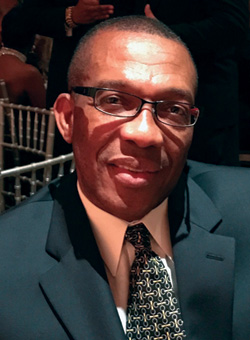Specifically Speaking with Max A. Stevens Senior associate vice president, CallisonRTKL, based in Baltimore

By Paul Ragusa
Updated Wed March 1, 2017
 What's is your role at the company?
What's is your role at the company?
As senior associate vice president, responsible for the security consulting and design services with the A&E firm CallisonRTKL. I am responsible for a team of highly motivated security professionals who provide, conceptualize, document, design and manage security design solutions for a broad cross-section of clients across the different business verticals.
What kinds of systems do you design or specify? What vertical markets do you work in?
We design the full complement of security solutions inclusive of access control, surveillance, video management, intrusion detection, emergency communication, visitor management, infant protection, patient wandering, asset tracking as well as a few customized solutions that are very client-specific.
How did you get started in security and designing/specifying?
I graduated from college with an electrical engineering degree and was always interested in systems design. I worked in the aerospace flight control world for a while but got into security design from designing security systems for my friends and relatives. I eventually entered the security world in the late '90s and have been in it ever since. The consulting, designing and specifying of security solutions is a very dynamic task that constantly changes with technology and client requirements.
Can you talk about what new or emerging technologies you are seeing or specifying today?
The security industry on a whole has embraced technology like no other, and came about as our clients and end users are more accepting of the role security plays in our day-to-day lives. With that acceptance, the industry has responded with a range of cool technologies, many of which we are integrating into our security solutions for our clients.
Security technologies we are excited about would be:
Biometrics:This technology has been around for a while, but never really gained traction as the devices were bulky and prone to false positive. With the availability of faster processors and better coding algorithm, we are designing more biometric systems for access control as your biometric features are unique to each individual and you can't leave home without it. Our biometric design includes facial recognition, vein reader, fingerprint and palm readers.
Video Analytics:As the video surveillance systems we design get larger and larger, getting into thousands of cameras per building, the need to use technology to process and analyze video images from events occurring at different locations simultaneously became a very important requirement to systems operators and law enforcement. This technology allows events of interest to an organization to be presented as they occur, which allows a more proactive response and handling of situations almost in real time.
Multi-head Cameras:As the demand for camera coverage increases in and around a building, designers struggle with the added infrastructure required to make the systems functional. The availability of multi-head cameras allows up to four distinct camera images to be supported on a single network cable instead of four individual cameras requiring individual cables, switch ports and licensing. Even though these cameras will not be used in every application, they have changed the design landscape for us in that we can provide the same amount of camera coverage with less HVAC, power and space requirements.
Collaboration and Visualization Systems:As the security requirements for the organization expand, we are being asked to develop security solutions that allow collaboration among different players in the organization. This could involve security-sharing information with facilities on the performance of the building management system, or with business continuity, emergency operation and risk management. The goal is to leverage the huge investments in security operation to assist other business groups within the organization.
What is your perspective on the future of the security industry?
Over the years I have watched and participated in the evolution of the security industry and would say I am pleased with the progress we have made in responding to addressing the real or perceived threats facing our clients. We have organizations like Security Specifiers who are doing a remarkable job of developing security specifications to AIA standards, and the security organization is working more closely to develop performance standards such as H.265 for video coding.
Organizations such as ASIS are doing a good job with their certification programs for individuals entering and practicing in the field of security consulting and design.
The security industry is striving to meet the security needs of individuals and organizations using design solutions that must be effective, reliable and user-friendly. The consultants and designers are constantly updating solutions as new technology is available and client requirements change and evolve.
With network access available using smart devices, clients require instant access to their security systems whether they are at home, in the office or on travel. The need for this kind of access brings in to focus the need for cybersecurity to ensure end devices on a security system are not easily accessed and compromised by bad actors.
Comments